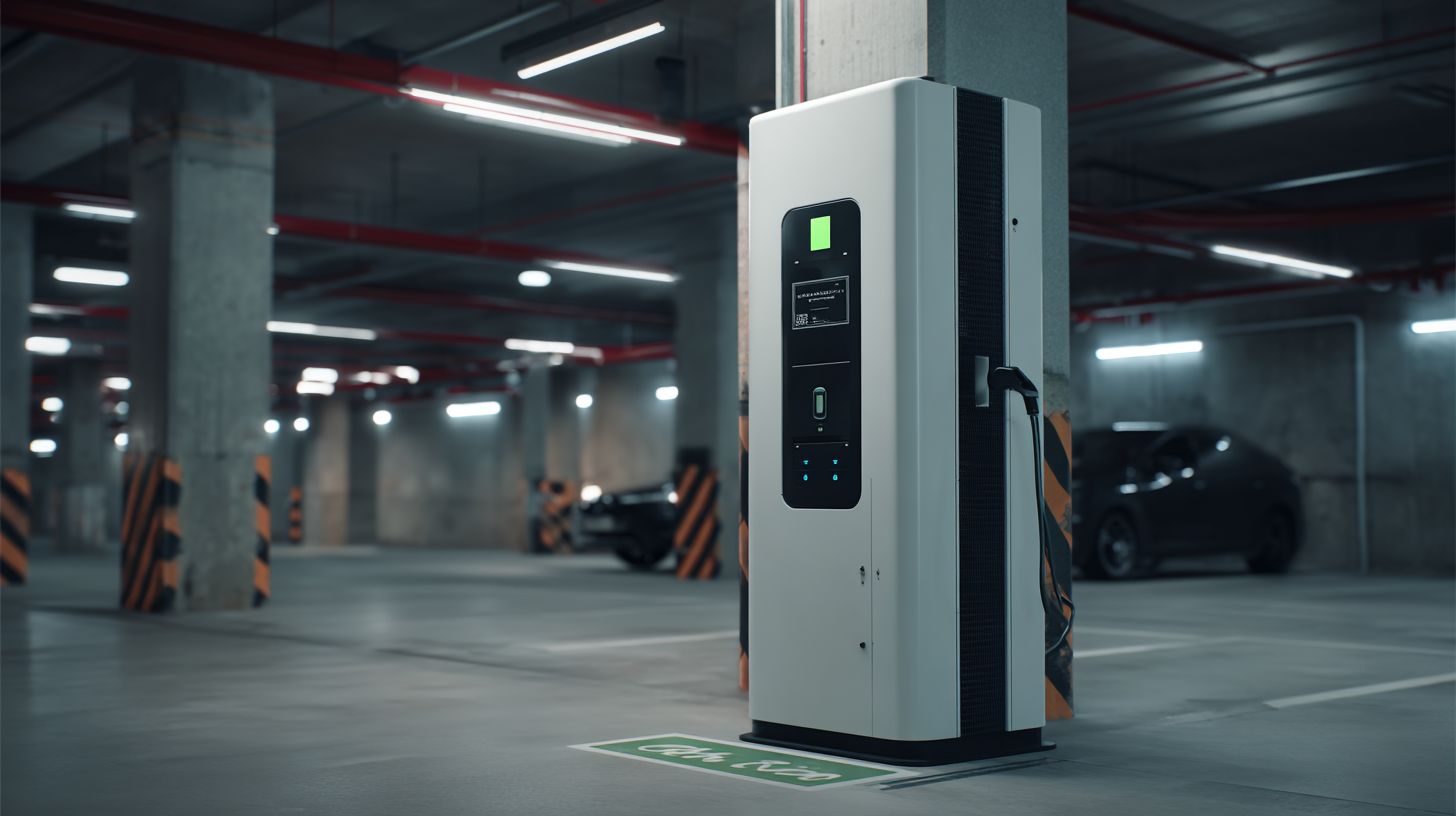As the electric vehicle (EV) market continues to accelerate, the demand for convenient and efficient charging solutions, particularly Portable EV Charging Stations, is soaring. According to a recent report by BloombergNEF, the global EV market is projected to reach 54 million units by 2040, with portable charging solutions playing a pivotal role in this growth. In 2025, the trends indicate a significant shift towards versatile charging options that offer flexibility for EV owners, reflecting the increasing adoption of electric vehicles across diverse landscapes and lifestyles. As more consumers seek reliable ways to power their vehicles away from fixed charging points, understanding the features and innovations of Portable EV Charging Stations will be essential for stakeholders in the industry. This blog will explore the key factors to consider when choosing the best Portable EV Charging Station, highlighting crucial insights and trends that are shaping the future of the EV charging landscape.

As we move toward 2025, the significance of portable EV charging stations is set to escalate dramatically. With the rising popularity of electric vehicles (EVs) and an increasing number of consumers making the switch to sustainable transportation, the demand for accessible charging solutions is paramount. Portable EV chargers offer convenience that stationary stations cannot, allowing EV owners to charge their cars almost anywhere. This flexibility makes them an essential accessory for long road trips and urban commuting.
The advancement in battery technology and the expansion of renewable energy sources further highlight the importance of portable charging stations. As industry trends lean towards more efficient and user-friendly solutions, manufacturers are focusing on creating chargers that are compact, lightweight, and quick to deploy. In 2025, we expect to see a surge in innovations that cater to the evolving needs of EV users, making portable chargers not just a luxury but a necessity in the push towards a more sustainable future. With increased investment and development in this sector, portable EV charging stations are set to play a pivotal role in supporting the global shift towards electric mobility.

When selecting a portable EV charging station, key features can significantly impact user experience and charging efficiency. According to a recent report by the International Energy Agency, global EV sales reached 10 million in 2022, indicating an increasing demand for charging solutions that cater to an expanding market. One essential feature to consider is charging speed. Look for stations that offer a Level 2 charging option, which can deliver up to 10-30 miles of range per hour of charging. This feature is crucial for users who need quick and efficient recharge options during road trips.
Another vital aspect is compatibility with various EV models. A survey conducted by the Electric Vehicle Association found that approximately 70% of EV owners prioritize universal compatibility in their charging stations. Ensure the portable charger has multiple connector types or an adapter to facilitate use with different vehicle brands. Additionally, features such as smart charging capabilities—which allow for scheduling and optimization based on electricity rates—are becoming increasingly popular. According to market analysis, the integration of smart technology is projected to grow by over 25% by 2025, highlighting the trend towards more advanced and user-friendly portable EV charging solutions.
This chart illustrates the key features consumers will prioritize when choosing portable EV charging stations in 2025, based on industry trends and insights.
As we approach 2025, several key industry trends are poised to shape the landscape of electric vehicle (EV) charging solutions. According to a recent report from BloombergNEF, the global sales of electric vehicles are expected to exceed 26 million units by 2025, leading to an increased demand for efficient and accessible charging options. One significant trend is the integration of smart technology into portable EV charging stations, allowing users to monitor charging progress through mobile apps and optimize energy use during off-peak hours.
Another important trend is the growing emphasis on sustainability in manufacturing charging stations. In line with the International Energy Agency's predictions, which highlight that sustainable materials will play a crucial role in the EV sector, manufacturers are increasingly focusing on eco-friendly practices to reduce their carbon footprints. This shift not only meets consumer demand for greener products but also complies with emerging regulations aimed at reducing emissions.
**Tip:** When selecting a portable EV charging station, look for models that feature smart technology for enhanced convenience and efficiency.
Additionally, consider the station's compatibility with various EV models and its charging speed to ensure it meets your specific needs. With attention to these trends, you can make an informed decision and choose a charging solution that aligns with future industry advancements.
**Tip:** Evaluate the materials used in the charging station's construction, as opting for sustainably produced options can contribute to your environmental goals while supporting the green energy movement.
The growth of the electric vehicle (EV) market has led to an increasing demand for portable EV charging stations, making it essential for consumers to understand their options. As 2025 approaches, a variety of brands and models have emerged, each offering unique features designed to cater to diverse user needs. When comparing leading portable EV charging solutions, it's important to consider factors such as charging speed, portability, compatibility with different vehicle types, and safety certifications. These elements not only influence the user experience but also ensure that the charging infrastructure aligns with current safety protocols and technologies.

In the competitive landscape of portable EV chargers, two major players stand out in terms of innovation and market presence. A comprehensive analysis reveals differences in charging technology, such as standard versus fast charging capabilities, and highlights safety requirements that must be adhered to when developing charging infrastructure. Both companies have invested significantly in research to enhance their offerings, ensuring that their products are equipped with the latest technology and meet industry standards. By evaluating these features carefully, consumers can make informed decisions that align with their individual requirements and the evolving trends in the electric vehicle market.
As the electric vehicle (EV) market continues to evolve, understanding customer preferences is crucial for selecting the optimal portable EV charging station in 2025. Users are increasingly seeking chargers that combine efficiency and convenience, with many emphasizing the need for faster charging speeds. A notable trend is the demand for chargers that can provide a significant amount of range in just a short period, making it easier for users to recharge during brief stops.
Moreover, portability is a key consideration for consumers. They want lightweight and compact designs that can be easily stored in their vehicles without compromising space. Many users also express a preference for chargers equipped with smart technology, enabling them to monitor charging status via mobile apps. This connectivity not only adds convenience but also allows for better management of charging schedules to optimize battery life and energy costs. As 2025 approaches, manufacturers must keep these insights in mind to cater to the growing needs of EV owners.
| Feature | Importance Level (1-5) | User Preference % |
|---|---|---|
| Charging Speed | 5 | 85% |
| Portability | 4 | 78% |
| Durability | 5 | 80% |
| Compatibility with EV Models | 4 | 75% |
| Smart Features (App Integration) | 3 | 60% |
| Price | 4 | 88% |
| Customer Support | 3 | 65% |
